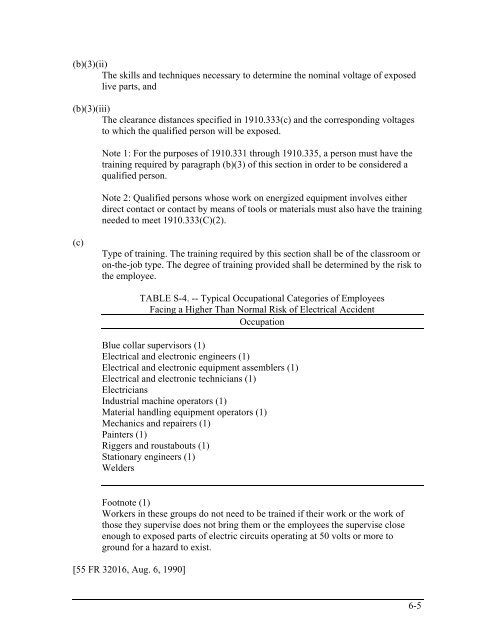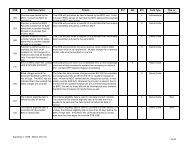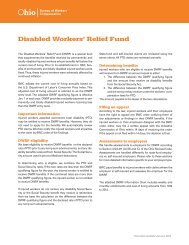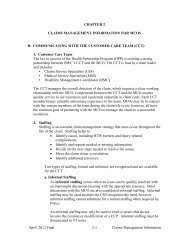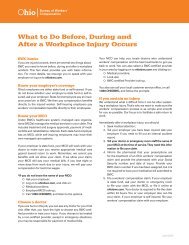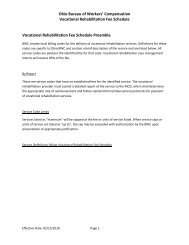Lockout / Tagout - Ohio Bureau of Workers' Compensation
Lockout / Tagout - Ohio Bureau of Workers' Compensation
Lockout / Tagout - Ohio Bureau of Workers' Compensation
You also want an ePaper? Increase the reach of your titles
YUMPU automatically turns print PDFs into web optimized ePapers that Google loves.
(b)(3)(ii)<br />
The skills and techniques necessary to determine the nominal voltage <strong>of</strong> exposed<br />
live parts, and<br />
(b)(3)(iii)<br />
The clearance distances specified in 1910.333(c) and the corresponding voltages<br />
to which the qualified person will be exposed.<br />
Note 1: For the purposes <strong>of</strong> 1910.331 through 1910.335, a person must have the<br />
training required by paragraph (b)(3) <strong>of</strong> this section in order to be considered a<br />
qualified person.<br />
Note 2: Qualified persons whose work on energized equipment involves either<br />
direct contact or contact by means <strong>of</strong> tools or materials must also have the training<br />
needed to meet 1910.333(C)(2).<br />
(c)<br />
Type <strong>of</strong> training. The training required by this section shall be <strong>of</strong> the classroom or<br />
on-the-job type. The degree <strong>of</strong> training provided shall be determined by the risk to<br />
the employee.<br />
TABLE S-4. -- Typical Occupational Categories <strong>of</strong> Employees<br />
Facing a Higher Than Normal Risk <strong>of</strong> Electrical Accident<br />
Occupation<br />
Blue collar supervisors (1)<br />
Electrical and electronic engineers (1)<br />
Electrical and electronic equipment assemblers (1)<br />
Electrical and electronic technicians (1)<br />
Electricians<br />
Industrial machine operators (1)<br />
Material handling equipment operators (1)<br />
Mechanics and repairers (1)<br />
Painters (1)<br />
Riggers and roustabouts (1)<br />
Stationary engineers (1)<br />
Welders<br />
Footnote (1)<br />
Workers in these groups do not need to be trained if their work or the work <strong>of</strong><br />
those they supervise does not bring them or the employees the supervise close<br />
enough to exposed parts <strong>of</strong> electric circuits operating at 50 volts or more to<br />
ground for a hazard to exist.<br />
[55 FR 32016, Aug. 6, 1990]<br />
6-5


